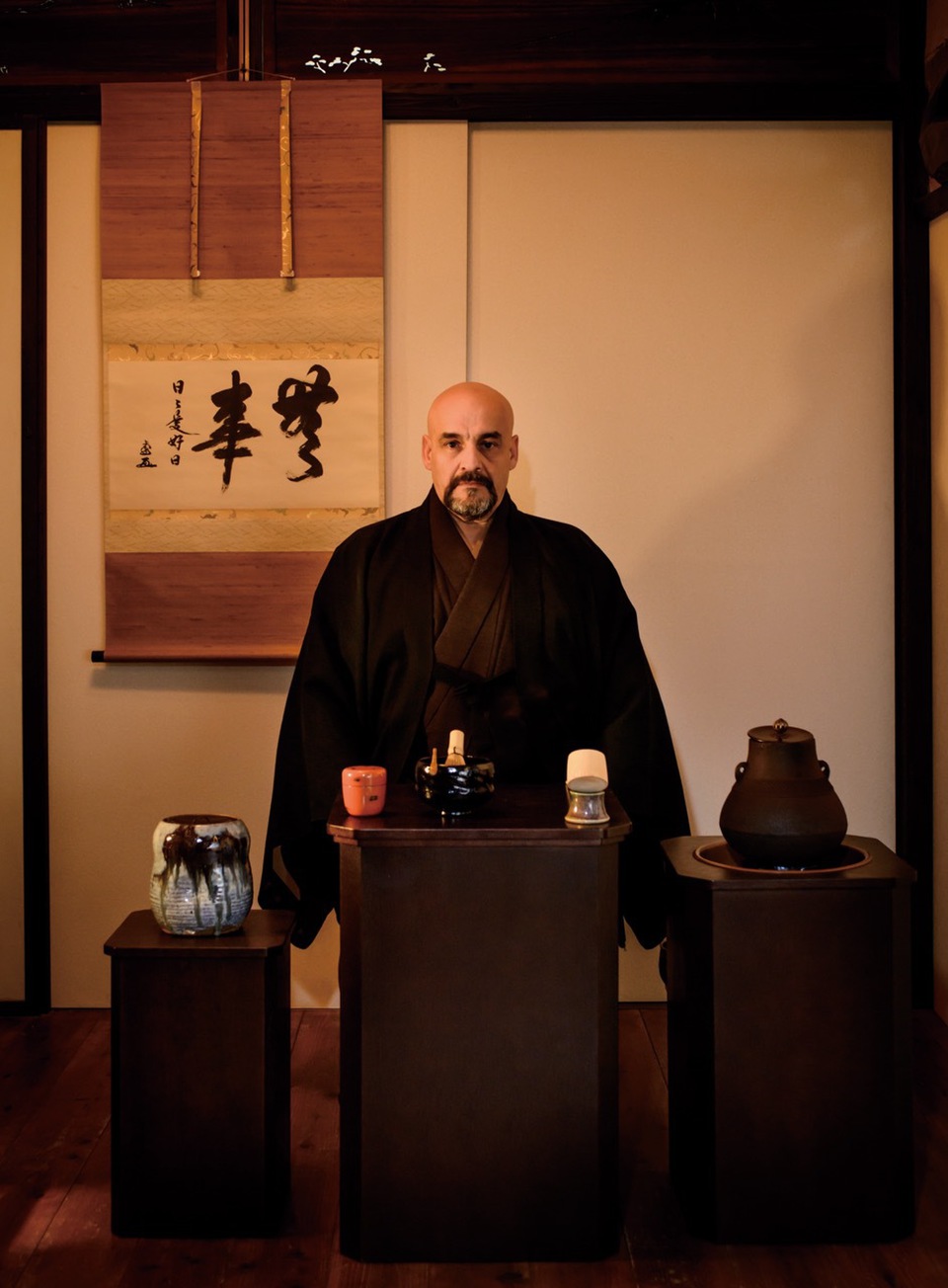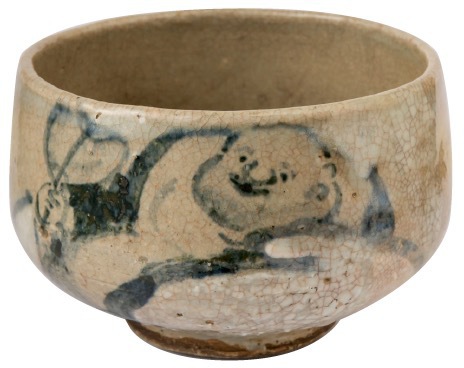The Heart of Japanese Hospitality
Randy Channell Soei
Mr. Randy Channell Soei in his café, ran Hotei; he teaches
the Way of tea to both Japanese and non-Japanese.
Mr. Randy Channell Soei first left his native Canada to study kung-fu in Hong Kong. Wanting to further develop his skill in martial arts, he moved to Japan, where he practiced training in Japanese budō (martial arts) for a decade in Matsumoto in Nagano Prefecture. He then moved to Kyoto to study chadō , the traditional Japanese Way of tea (widely known as the tea ceremony) at the Urasenke Gakuen Professional College of Chado from 1993 to 1996. Upon graduating he began teaching and is currently a tea master who lectures all over Japan to both Japanese and non-Japanese on the Way of tea, in addition to his regular lessons at Nashinoki Shrine. He received his “tea name,” Soei, in 1999.
Living in Hong Kong, Mr. Channell first became aware of the phrase bunbu ryod , which means that a warrior should be accomplished in the cultural arts as well as being a person of refinement and education. So to balance his martial training, he sought out other cultural arts. By coincidence, his next-door neighbor was a teacher of the Way of tea, and when he had his first tea experience, Mr. Channell was immediately enthralled. “The movement and postures of tea are actually very similar to budō,” he said.
According to Mr. Channell, “The four principles of chadō are wa, kei, sei, and jaku; harmony, respect, purity, and tranquility. They were valid 500 years ago, they are valid today, and they will be valid 500 years from now. The ideals of the Way of tea are timeless. Another important phrase is ichigo ichie. Simply translated it means a once-in-a-lifetime encounter. No tea gathering can ever be captured and repeated in exactly the same way. All the guests share a special bond because of their participation in that singular event. Chadō allows you to enter a new world based on the aesthetics developed by Sen no Rikyu and other great tea masters.
The Way of tea is at the very heart of Japanese omotenashi (hospitality) culture. It is a complete art form, including many other traditional Japanese arts, such as architecture, calligraphy, flower arrangement, ceramics, and lacquerware.
“The Way of tea is a developing tradition. By adapting and looking to the future, it has been able to continue, where as other arts have become stagnant,” remarked Mr. Channell. “In 1872 at the World Expo held in Kyoto, Gengensai, the 11th Grand Tea Master of the Urasenke traditon, served tea using the ryurei style, one that incorporates tables and chairs. He developed this style so that the visiting dignitaries could enjoy tea without having to sit for hours on their knees, as was the vogue in the Meiji period for tea practitioners. Similarly Sen Genshitsu, the 15th Grand Tea Master of Urasenke, adopted the Way of tea to be a vehicle for spreading world peace. He has traveled around the world for more than 50 years, serving tea everywhere with the message, Peacefulness through a Bowl of Tea.”
Mr. Channell commented, “The Way of tea can be mastered by a person of any nationality. Japanese culture is for all people and one of Japan’s greatest exports. The reputation of the Japanese is that they are group oriented, and they are; but they are just like anyone else when you get to know them as individuals.”
As Mr. Channell noted “The tea ceremony is very deep, but does not have to be difficult. Tea is a time for sharing. We do not bow to objects in tea; we bow to the scroll, not as an object but out of respect for the words and the person who wrote it. So you can be of any religion and still enjoy the Way of tea. All it requires is an open mind and heart. As with some forms of Japanese martial arts that cannot be performed without another person, in the Way of tea the guests play an important and integral role. It is very interactive. The Way of tea can also be very simple and enjoyable, too, the ideal atmosphere to experience the heart of Japanese omotenashi.
































































































































